Cassava Farming Process

Do you wish to learn the step-by-step process of cassava farming?
Let’s say you are a cassava farmer and you wish to diagnose your cassava farm to know whether you are doing the right thing.
Whichever category you fall under, this article will help you achieve success.
When you carefully apply the tips in this article, you will begin to get a better yield from your cassava farm.
The cassava farming business is a very lucrative agribusiness, especially in Nigeria and other West African countries.
You can’t afford to be in Nigeria and not want to start cultivating cassava immediately after reading this cassava farming guide.
If your intention is to learn how to make money from cassava farming you will get more than enough tips from this guide.
By the end of this article, you will get enough knowledge about the cassava farming business that will make you start farming cassava right away.
In addition to this cassava farming guide, you will learn the different pests and diseases that affect cassava and lower your cassava yield.
You will also get to explore the important health benefits of cassava and much more.
How to start a cassava farming business
Cassava (Manihot esculenta) is a universal crop that is of great importance because of its many uses.
Little wonder the demand for cassava is high both in local and international markets, thereby making the business of cassava farming and processing very profitable.
Cassava farming is a profitable agribusiness in Nigeria.
However, you need to make some basic decisions before investing in the business.
You must also think about creating a cassava farming business plan.
This will prevent you from making mistakes along the line.
Here is a sample agriculture business plan.
The cassava farming process explained in this article will guide you step by step, showing you how to successfully grow cassava from land preparation to harvest.
You can make more money by processing cassava into other products.
For instance, you can learn how to process cassava into garri and make huge money from selling the garri.
If you need the motivation to start your own cassava farming business in Nigeria, then watch the video at the end of this article.
- Reasons Many Agribusinesses Fail
- How to Grow Ginger Plants in any Region of the World
- Maize Farming Procedures for Increased Yield
- Watermelon Cultivation Guide
- Groundnut Farming Process Made Simple
- Okra Cultivation Guide
Uses of Cassava
As stated earlier, cassava has many uses, and it cut across several production industries. Cassava has gained wide usage in industries for the production of paper, ethanol, pharmaceuticals, biofuels, starch, and flour.
Nowadays, cassava flour is being encouraged to be used in the production of bread, doughnuts, and other confectioneries.
Cassava can also be processed into fufu and ‘garri’; a popular food among many Nigerians.
Not only is the root of cassava important for the production of food, but its leaves can also be used as a vegetable for soup or as feed for sheep, goats, snails, and cattle.
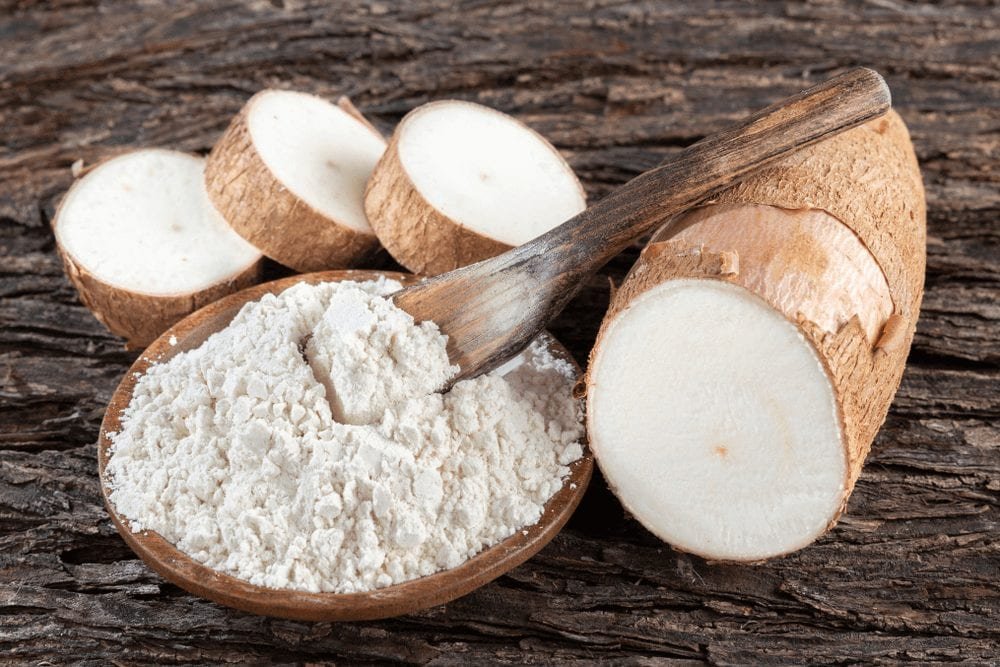
Health Benefits Of Cassava
- Source of vitamins and minerals: Cassava roots are an excellent source of minerals and vitamins such as manganese, calcium, phosphorus, potassium, and Iron. These vitamins and minerals are important for the healthy development of the body.
- Rich in fiber and dietary fiber: If you want to prevent constipation, eat more cassava. The fibers and dietary fibers in cassava help to free up the bowels and prevent constipation.
- Provides energy: We eat food to have the energy to do work. Eating cassava which is high in carbohydrate content can provide a lot of energy to the body.
- Helps to achieve weight loss: Eating cassava can fill your stomach very easily. As a result, it is a helpful diet in weight management programs.
- Prevents cancer: Eating of cassava regularly prevents one from various types of cancer.
- Enhances digestion: The presence of high fiber and dietary fiber in cassava enhances a good digestive system.
- Cassava helps in treating diarrhea, and rheumatic diseases.
- Consumption of cassava is beneficial for good health such as eyes, hair, and skin.
- Cassava is used as a home remedy for curing headaches and fever.
- Cassava enhances the fast recovery of wounds.
- It is helpful in boosting the immune system and lowering blood pressure.
- Constant consumption of cassava helps to propagate good nerve and brain health.
Cassava Farming Process
Cassava does very well in most parts of West Africa like Nigeria, Cameroon, Senegal, Benin Republic, and Ghana.
No matter the location you find yourself, this cassava farming process remains the same.
Except in some locations with weather conditions that do not adequately support the successful growth of cassava.
The commercial cassava farming process involves simple farm operations which are as follows;
- Selection of a Suitable Land Cultivation of Cassava
- Land Preparation for Planting Cassava
- Planting the Cassava
- Weeding of Cassava Farm
- Fertilization of Cassava Plantation
- Harvesting the Cassava Tubers
Below are the details of the steps in the cassava farming process.
Step 1: Selection of a Suitable Land Cultivation of Cassava
The first step in the cassava farming process is the selection of suitable land for cultivation.
Cassava can be grown on most soils; however, the best soils are sandy clay loam that is well-drained without a fluctuating water table.
Cassava is a tropical crop, as a result, the most favorable growing conditions for cassava farming are in humid-warm climates.
The best temperature for growing cassava is between 25 – 29°C and precipitations of between 1000 – 1500 mm.
Ideally, these weather conditions should be evenly distributed throughout the year.
Step 2: Land Preparation for Planting Cassava
After successfully choosing a suitable site for cultivating your cassava, clear all bushes in the area immediately.
The reason for clearing the bushes around the area is to allow more sunlight to the soil.
Also, it helps to remove weeds and undergrowth which might otherwise compete with the growth of your cassava.
By clearing the bush in the selected area using the burning method, you will destroy disease vectors and other parasites present in the soil.
In addition, the layer of ashes left after burning may help to increase the quantity of potassium salt in the soil available to the growing plants.
Some people have argued that bush burning may also deplete soil nutrients.
They claim that as you are burning the bush, some essential nutrients will find their way out of the soil in the form of gases.
The best way to avoid depleting the soil through bush burning is to rotate the method of clearing the vegetation in your cassava farm with other methods.
As you are preparing the soil for cassava farming, mix the soil with dried animal manure or compost to increase soil fertility.
Your ridges or mounds should be at least 0.75m-1m apart.
However, this depends on the availability of planting materials and the fertility of the soil.
The cassava plant spacing and population also vary, depending on whether cassava is planted solely or in association with other crops.
Some experiments have shown ridging to produce relatively lower yields than flat cultivation, but the work of weeding and harvesting is greatly reduced by ridge planting.
For farmers in the rainforest and derived savanna zones where soils are prone to water logging, planting on ridges or mounds is a general practice.

Step 3: Select the Best Cassava Variety for Planting
To get a good harvest, you would need to select the best cassava variety to plant. There are over 40 varieties of cassava different in their tuber yields and ability to withstand pests and diseases. When selecting the best variety to plant, take note of the following:
Ability to grow fast
Ability to store well in the soil
Ability to withstand pests and diseases
Longer shelf life
High starchy content
In the planting stage of the cassava farming process, the first thing to do is to carefully select a cassava variety that you will grow.
Select varieties with multiple pest and disease resistance, high and stable root yields, and acceptable quality.
Step 4: Planting the Cassava
The optimal cassava plant spacing is 1 meter by 1 meter apart along each row and across ridges or mounds.
The remaining space between the cassava plants can be used you grow vegetables, maize, legumes, and other plants.
Inter-cropping cassava with other crops reduces the danger of loss caused by unfavorable weather and pests by spreading the risk across several plants with different vulnerabilities.
Ensure you are planting cassava stem cuttings you cut from plants that are up to 8 – 18 months old.
Use a sharp machete or cutlass to cut the stem.
Take care not to bruise the buds or otherwise damage the stem.
The cuttings should be about 20-25 cm in length with 5 or more nodes.
Cuttings from the base of the stalk are better planting materials than those from the top in terms of germination and plant yield.
How to Plant Cassava
There are three methods of planting cassava
- Horizontal method of planting cassava
- Vertical method of planting cassava
- The inclined method of planting cassava
1. Horizontal planting
Plant cuttings are buried 5 – 10 cm below the soil surface in dry climates and when mechanical planting is used.
Cuttings planted horizontally produce multiple stems and more tuberous roots but they are relatively smaller in size.
However, in loamy and rich soils the multiple stems and roots are at an advantage resulting in high yields.
2. Vertical planting
Many people use this method during rainy days so that cuttings will not rot if the soil is constantly wet.
In contrast, under low rainfall conditions, vertical planting may result in dehydration of the cuttings.
3. Inclined planting
Cuttings are inclined at 45o in semi-rainy areas, leaving 2-3 nodes above ground level.
The inclination of the stem and roots provides leverage which makes harvesting easier than in the other orientations.
Plant early in the morning or late afternoons when the sun is cool to prevent excess heat from heating the crop.
Replace all cuttings which did not bud after two weeks of planting.
Step 5: Weeding of Cassava Farm
An ancient Chinese philosopher once said, “Plan for what is difficult while it is easy, do what is great while it is small.”
With this quote in mind; Thorough land preparation is key to reduced weeding activity.
Plant cassava cuttings early enough before weeds start emerging.
Cassava requires approximately 3 months of weed-free condition for optimum yield.
Use a contact and/or pre-emergent herbicide to control weeds for the first three months of growth.
Apply post-emergence herbicides as soon as weeds begin to emerge after the pre-emergence herbicide treatment.
Weed with hoes or adapted cutlasses 3 or more times depending on the type of weed.
On a large scale, use tractor-operated weeders.

Step 6: Fertilization of Cassava Plantation
The kinds and quantities of fertilizers required by a cassava crop depend on the nature of the soil.
You may not need to fertilize the farmland immediately after clearing vegetation.
If you have grown cassava on the land for several years in succession or in a rotation, the soil nutrients deplete.
Therefore, fertilizer application becomes necessary.
Most farmers use different kinds of organic manures, such as cattle dung or chicken droppings to improve soil fertility.
Remains of leguminous plants, incorporated into the ground, also improve soil nutrients.
To further enhance the growth and overall yield of your farm, you will need to apply fertilizers. Use a good fertilizer to improve soil nutrients.
Test a sample of your soil to determine the fertilizer types and application rates that will be suitable for your farmland.
A fertilizer that is rich in potassium salt, favors the formation of starch in cassava.
Nitrogen and phosphorus, on the other hand, are essential for growth.
If the soil contains large quantities of absorbed nitrogen, the result will be like the fig tree in the Holy Bible that Jesus Christ saw on his way to Jericho, “having a heavy development of vegetative growth without a corresponding increase in root production.”
Apply the first dose of NPK fertilizer, in the ratio as determined by the soil test, 4-8 weeks after planting.
Place fertilizers 15cm to 45cm from the base of the stem in drill holes – 10cm to 15cm deep.
Placement of fertilizers in drill holes reduces fertilizer loss through runoff water.
A second dose of Fertilization of plants 16 weeks after planting significantly increases the yield of roots and enhances tuber bulking.
For effective absorption of fertilizer nutrients into the soil, do not apply fertilizer when the soil is dry.
Step 7: Harvesting the Cassava Tubers
How long it takes for cassava to reach maturity differs from one variety to another.
Cassava becomes mature for harvesting 8 – 18 months after planting.
However, the exact time for harvesting cassava depends on other factors such as the environment and the agricultural practices adopted.
How to harvest cassava roots
The best way to harvest cassava is to do it manually.
The stems of the cassava plant are first cut by hand, machete, or machine.
When you are cutting the stems, leave a small portion of the stem at the base of the plant to serve as a handle to pull the storage root up.
Don’t damage the stems when you are cutting them.
Keep the stems you will plant next season.
Stack them together in small portions as you move.
Uproot the cassava immediately by pulling the plant from the soil while holding the small portion of stem you left when cutting the stem.
If the soil is too hard, use a hoe to dig out the part stuck in the soil so that the tubers will not break in the soil.
Cut off the tubers from the stem.
Be careful not to bruise the roots as you are harvesting otherwise, they will deteriorate very rapidly.
Step 8: Storage and Processing of Cassava Roots
It is better to harvest roots only when you have a ready market to sell your cassava tubers to prevent them from decaying and forming post-harvest waste.
You can process the cassava tuber immediately after harvesting.
Do not leave the tubers without processing them because they will begin to deteriorate within about 48 hours, and then begin to rot and decay.

Is cassava farming profitable?
Cassava farming is a very profitable business in Nigeria.
In fact, cassava farming is one of the greatest farming businesses to start.
Despite the challenges confronting agricultural activities in Nigeria today, cassava products are still in high demand.
I personally know a lot of people who are making millions from cassava farming.
As long as you have a steadily growing market to sell you and you have a steady supply of cassava, you will always be in business.
How profitable is cassava farming?
The level of profits you make from cassava farming will depend on several factors.
You can make a profit from cassava farming by producing, processing, or marketing cassava products.
At each of these levels, the profit margin differs.
How to profit from cassava farming
As stated earlier, there are different stages you can make a profit from cassava farming.
You can become a producer, a processor, or a marketer.
I will be exposing the different ways you can profit from cassava farming shortly.
Stay with me.
Here are some of the ways to make money from your cassava farm.
1. Become a cassava producer:
Cassava producers make profits by producing raw cassava from their cassava plantations.
They produce large quantities of cassava from their cassava farm and sell it to off-takers and other processing plants.
The larger the number of raw cassava orders they receive, the more profit they are able to make.
2. Own a cassava processing plant:
We all know that one can make a lot of money by converting raw agricultural produce into other products.
If you have the money to set up a cassava processing plant, you can make a lot of profit too.
Depending on the result of your market research, you can choose the types of cassava products you want to be producing.
This is why it is very important to have a cassava farming business plan.
A comprehensive cassava farming business plan will help you know what the market wants and how you are going to sell to them.
As the owner of a cassava processing plant, you can convert raw cassava into garri, flour, animal feed, starch, etc.
By adding value to raw cassava, cassava processors are able to make a profit from cassava farming.
3. Become a marketer of cassava products:
Marketing cassava products are, in fact, the simplest way to enter into the cassava farming business.
As a marketer, you neither produce nor process cassava.
All you do is make cassava products available to processing plants and consumers.
A cassava marketer makes a profit by connecting producers with end-users.
To succeed as a marketer of cassava products, you must have a large network of steady buyers.
The more you can sell, the more money you can make.
Other ways of making money from cassava farming
Sell the cassava stem out to make a profit and use the excess as firewood for cooking when they are dry.
Another way of making money from the cassava farming business is by processing and selling off the young succulent leaves of cassava as a vegetable.
Also, sell off all the green leaves including the young parts of the stem, or feed them to your livestock if you keep any.
Cassava Diseases and Pests
Pests and diseases are one of the major reasons why many agribusinesses fail.
They increase the loss of cassava which should have contributed to your overall profit.
The major pests and diseases of cassava are:
- Thrips and Mites
- African cassava mosaic virus
- Cassava mealybug
- Insects
- Herbivorous Animals
Thrips and Mites
You can control thrips and mites using miticides and Insect Growth Regulators.
These pests are prevalent during dry periods and decrease as rainfall increases.
African cassava mosaic virus
The African cassava mosaic virus causes the leaves of the cassava plant to wither.
When such withering occurs, it limits the growth of the root.
The best control measure is to plant resistant varieties.
Cassava mealybug
This causes a reduction in the internode length of the cassava stem.
This pest can cause up to 80% crop loss, which is extremely detrimental to the production of subsistence farmers.
Insects
Some insects affect the plant directly. For instance, locusts feed on cassava leaves.
Ants and termites eat up cassava stems after planting, or later in the season; therefore destroying whole plants.
Others affect the plant indirectly by the transferring virus into the plant.
Use insecticides and Insect Growth Regulators to control insects.
Herbivorous Animals
Grass-cutters, pigs, goats, and sheep frequently expose and eat up roots in the soil.
The damage to the roots can provide an entry for the microorganisms that cause roots to rot.
To prevent this, keep the farm and its surroundings weed-free.
Use traps and poisoned grains to kill them or wire mesh fencing to prevent them from entering your field.
Conclusion
You have come a long way in reading this post to this point.
Just before you start reading about another agribusiness, please take a minute to share this post using the share button.
If you have a question or contribution, please submit them in the comment section.
I will review them and reply immediately.
Watch this video below to learn more about cassava farming and why you need to start now.
- From Farm to Fork: Pest Control Challenges in Food Production and Distribution
- Potato Farming Guide – How to Grow Potatoes Step-By-Step Guide
- How To Process Cassava Into Garri
- Cassava Farming Process
- Guide to Growing Wheat: Techniques and Tips
- The Study of Agricultural Crops that Make It Possible to Feed People
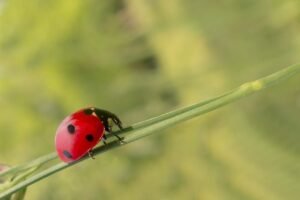
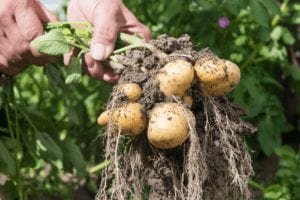
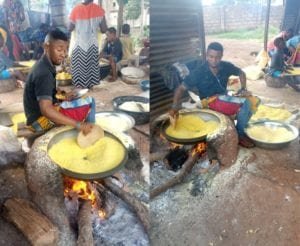

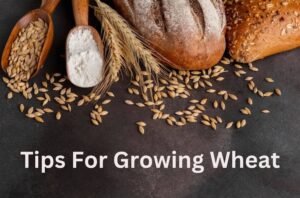
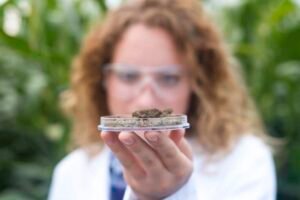



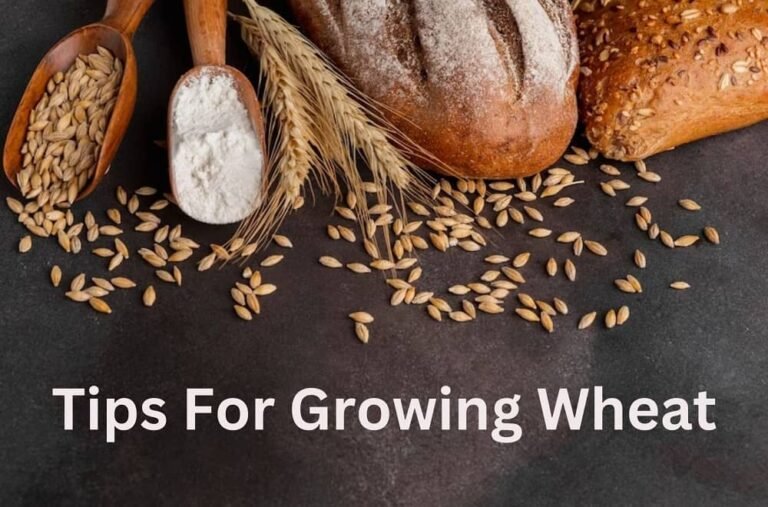


Hello, please sir am new in the seed system but I wan to start my own cassava farming 2024 but I have no knowledge on how to go about it please I need your help it is for gari productions in sierra Leone
You are welcome to check our Cassava farming category.
Very informative and good for farmers. Pls keep it up
Thank you, Karounwi.
Thank you sir
Please sir/ma. I need assistance and advice on this issue:
(1) Can I still plant cassava now (October ) ?
(2) Termites are destroying my cassava and preventing them to germinate: what can I do ?
Depending on your location, you can still plant cassava, however, you should make provision for watering the plant as we are gradually running into the dry season.
As for the termites, you can use an organic pesticide to drive them off.
This is the best step-by-step guide so far I will follow to help me achieve my goals in my proposed cassava cultivation projects.
Thanks for sharing with us.
Came across your writeup,it’s resourceful and very informative.Came into Agricutural business in January as a farmer with 50Acres of cassava, and Maize, can you link me up direct with companies that buy cassava and maize?
Appriciated once again.
Ade
Thanks for the information, I still want to know how cassava can be give great product I the ground.
I will be glad if you asked this question again as I do not totally understand this, maybe due to typos. Thanks.
Hello Mr. Seyi. In regards to the growing of cassava plants; is it wrong to trim the leaves for an even look once they are large enough?
I agree with the statement and I am ready to learn
Can you link me with companies that buy maize, cassava and plantain products
Hello Sunday, I can’t link you up directly, but you can interact other members of our group who may be interested in buying your product.
Hello, am a first timer here and found this article informative and educative. Thank you as i look forward in the journey of cassava planting.
I am glad that you found value in this article. I wish you success as you journey this path.
Nice article
Cassava is one of the best staple crop in Nigeria with lots of products that can be obtained from it.
That’s very true.
THANK YOU VERY MUCH TO HAVE COME ACROSS THIS PAPER, AM CURRENTLY DOING MY ASSIGNMENT ON INTRODUCING CASSAVA IN LESOTHO
Wow!! That’s so amazing. Well done and good luck with your assignment.
I feel so good reading your write up. Its educative and informative at a time like this that am planning on investing in Agriculture. God bless you!
You’re welcome.
Nice writeup. Please I would like to know where suitable varieties of stems could be gotten, thanks.
Check any agriculture institute near you
Pls do write business plan on cassava farming?.if yes, within how many weeks.
Your article is resourceful, weldone.
I can link you with a business strategist who will be willing to offer that service.
Please send an email with your request to [email protected]
Hmmmmmm,thanks for doing all this with no dine. pls its enlightining brainlently educative thought provoking mentors and motivational 100%
Thank you so much for this honest feedback, Joseph.
Thank You very much for this. What time of the year is best for planting?
With the current climate change situation around the world, one cannot say for sure when best to plant.
However, if the soil has received enough rainwater or is close to a source of water, then you can plant.
Am a new farmer and I need a writer that can give mr a business plan on casava and maize
I aprieciat this article thank u. But pls I want to know the right month to start planting casava
Once all conditions for farming cassava is right, you can go ahead and plant.
A piece of good advice is for you to learn from cassava farmers near you for guidance.
Ladies and Gentlemen:
Thank you for a well written article. It is very educational, informative and impactful..
I would appreciate it very if administration would keep me informed on new technological advances on Cassava farming: planting, processing and marketing.
God bless.
You are welcome.
We’ll do well to keep you updated with all the information you need to succeed in cassava farming.
Cheers.
Thank you for this well researched write up. I farmed cassava two years ago but it didn’t do well mainly due to the fact that I didn’t seek for professional advice. But I am determined to still farm this year again. Pls send me your contact details so that I can reach you, Thanks.
Thanks a lot for the Compliment @Festus.
Great to know that you are not giving up just yet.
You can reach me quickly via my email address, [email protected].
I will be expecting your mail.
Cheers.
Hi admin, I’m so happy coming across this article, I live in Europe and I have always had huge interest in farming but unfortunately I cannot do it here, I therefore must return home, I really need your contact please if possible please inbox me thanks.
Mr James that you pick interest in farming. I can also be of help in cultivating cassava, tomatoes, maize and cashew farming. Contact me through 08184015971
My whatsapp number. Thanks
Please do transact at your own discretion.
Agro4africa will not be liable for any loss or damages arising from doing business with anybody on this platform.
Cheers.
I started my research on cassava today and I’m glad I studied your write-up. Hoping to start small very soon, I shall be doing more of cassava processing too. Thank you! I’m smiling with glee.
Wow!! Good to know that you find this article on cassava farming very useful.
Thanks for your honest comment.
Reading this article made me better understanding of how cassava are prepared and planted given that I am researching on cassava farming.
Thank you so much!
Wow! You are welcome.
Success in your research.
Pls help me my cassava are not growing well
Wow… Sorry about that. It could be from the soil, or probably there’s something you’re not doing right.
Wao thanks for this wonderful write up but I need your help. I planted one hectare of cassava late March while my neighbour planted his late April. some of my cassava has grown well (this is the area that link my hectare and my neighbour’s hectare together) more than his while most cassava at the middle part of my land have not grown well at all (very short). This land had very tall trees like that of a forest before i cleared, burn and planted on it though we didn’t make ridges for the cassava. I am wondering why my cassava didn’t grow well and my neighbour’s cassava are growing very well. Pls enlighten me and I need a solution
Hmmm…
I understand how you feel seeing that your cassava is not growing well as it should.
It could be a result of buried wood stomps and underground roots inhibiting the growth of your cassava.
Also, it’s important that we always test the soil before we start planting.
Assumptions are not good for business. Be certain that the soil is good enough to support the plant before planting.
You can get a simple soil test kit around for that task.
I hope you got my point concerning this issue?
I await your feedback.
Good write up and well commended but could one find a ready market for this product especially internationally. Am into cassava production and many a times,the produce are wasted away by the local processors.kindly send me a link on this crop marketing thanks
Our brothers and sisters in diaspora are looking for where to buy fufu and garri. The market is readily available for your product.
Just work on your cassava processing and packaging to meet NAFDAC and SON standards, and have someone to market the product for you over there.
I will like too know the herbicide used in cassava and Maize farmlands and the price
I found this article very useful. I planted cassava on a 2plots of land out of available one acre. The land is fenced but the grasscutters and some other animals are now destroying the cassava. Please what animal poison will you recommend or what other advice will you recommend!
Thanks in advance
I will advise that you set traps in the fence and weed your farm on time to discourage them from entering your farm.
Also, cover the roots of the cassava to avoid exposing them to the grasscutters.
Finally, harvest your cassava as soon as they are mature.
Admin thanks a lot for this article . However, I would like to inform everyone that am into agribusiness and we sell all planting materials needed like stem, sucker, cashew nuts, seeds, snails , etc that are well treated and gives very high and quality yield. We also help in farming contracts like those that would like to go into farming . we help people to farm and find great market for the goods …both loçal and international markets. Looking forward to receiving from you all. Thanks
wow, the information I got from the write up is very impactful. I will also like to know more on how to get the best harvest from the land. where to do the land test before planting in Ogun state or Lagos state.
Hello Benedict, thanks for the compliment on this post.
To answer your question…
I strongly recommend you apply all the steps shared in this article. Also, try to ask questions from other successful farmers around you.
For your second question, I do not know a specific location for soil testing in Lagos and Ogun, but the State Ministry of Agriculture is a good place is start.
Cheers.
Pls send me your number,my number is 08036013466,I want to start cassava farming. Call me on this number please. My email is not functioning
Hello Chidinma,
Please send a mail to [email protected]
That’s the best way we recommend for effective communication.
Thanks.
Wow, thanks for this writeup. It has added my knowledge on cassava production. I hope to start on 1ha soonest. Thanks again.
#letusbuildtheafricawewant…
Thanks for your reply.
Success to you as you venture into farming.
#Let’s_Build_The_Africa_We_Want
Thank you for this incitive and informative education on casava plantation, however, can you provide me tips on casava processing and necessary machine including the cost because I am interested in casava processing industry. Remi Ajayi, Nigeria
Thanks for your reply.
We’ll do well to update that information soon.
Which is the best herbicide to use in a mixed farm of corn and Casava.please how many litres of herbicides can be used in a 3 plots of land for Casava
I have recently ventured into agro-business. I have just finished planting cassava on 8.9 hectares of land in Malawi. Im very excited about this venture. Looking forward to any advice on this. I believe we need to diversify and move away from depending on maize for survival.
Wow! Good one from you. We’ll do our best to provide new updates and technologies on this platform.
Thanks for leaving a comment.
Thanks, I’m also looking at drip irrigation and inter-planting with legumes to enhance soil fertility, will keep you posting, very excited as this is my first ever agro-business I have ventured into. Has anyone done this before if so what advice would they give?
Please am interested in cassava farming,kindly send me details and cost of planting over 1hectare of land thanks.
Hi Oluseyi, depending on your location, the cost of planting over a hectare of land may vary. There is no fixed cost for that purpose. However, you may carry out a cost survey using the following cost items
1 Land preparation
2 Cassava cuttings
3 Planting
4 Pre-emergence herbicides
5 Fertilizer
6 Insecticides
LABOUR
7 Application of herbicide
8 Application of insecticide
9 Application of fertilizer
10 Weeding
11 Harvesting
The figures you see on the internet are not always correct. So to avoid overestimating or underestimating, I prefer you find out for yourself first hand.
Thank You.
I will like to know the best way to treat a farm land planned to be used for casava during clearing
After tilling the soil, use a preemergence herbicide containing Atrazine on the land and plant the cassava 5 days after application of the herbicide. This will prevent the early growth of weeds on the farm.
By all means, avoid systemic herbicide which is absorbed into the soil and affects the cassava.
If you can get a specialist to test the pH or acidity of the soil, that will be awesome. If you have a personal soil testing kit, a pH level between 4.5 – 6.5 is optimum for a good yield of the cassava. You can use calcium carbonate fertilizer (if the soil is too acidic) or a sulphate fertilizer (if the soil is too basic) to correct the soil.
I hope this helps. I’ll advise you to consult a professional in your area to help you assess the land you want to use.
Cheers to your success!!
This is one of very serious innovation a process that fit the drive for poverty eradication in community like northern uganda where there alot of land that have not been used l will immediately start this Activities this year however the challenges is where to get the stem for planning like Nase 14 from .
Please how do I cite this work
If you are citing this work for an academic publication, then you should follow the rules of your chosen referencing style.